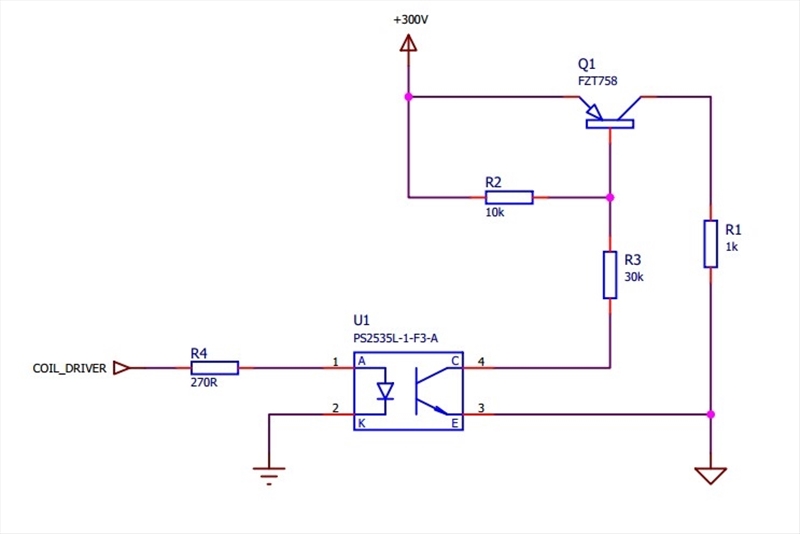Hi guys,
Quick question. I have to imagine a “high side switch” to switch a kind of big power relay.
The particularity of this relay is that you have to apply a very high voltage in the order of 250-300V for 20ms and then maintain it with a voltage of 24V ( I don't have the ref ).
I need something as compact as possible, and I don't have a 10-20VDC rail for the bootstrap power supply of a Mosfet driver.
It's a microcontroller that activates the coil excitation, so I need isolation between the MCU and the high voltage.
The load is symbolized by resistor R1 ( 300mA ), resistors R2 and R3 are 400V resistors and R3 is a 3W resistor:

I need to do more or less the same thing for the 24V rail, but without the high-voltage issue, and couple the two collectors together via diodes.
Question:
Do you have any criticism on this schematic ?
Can you think of a more compact, more elegant, or better solution?
Thank you very much
